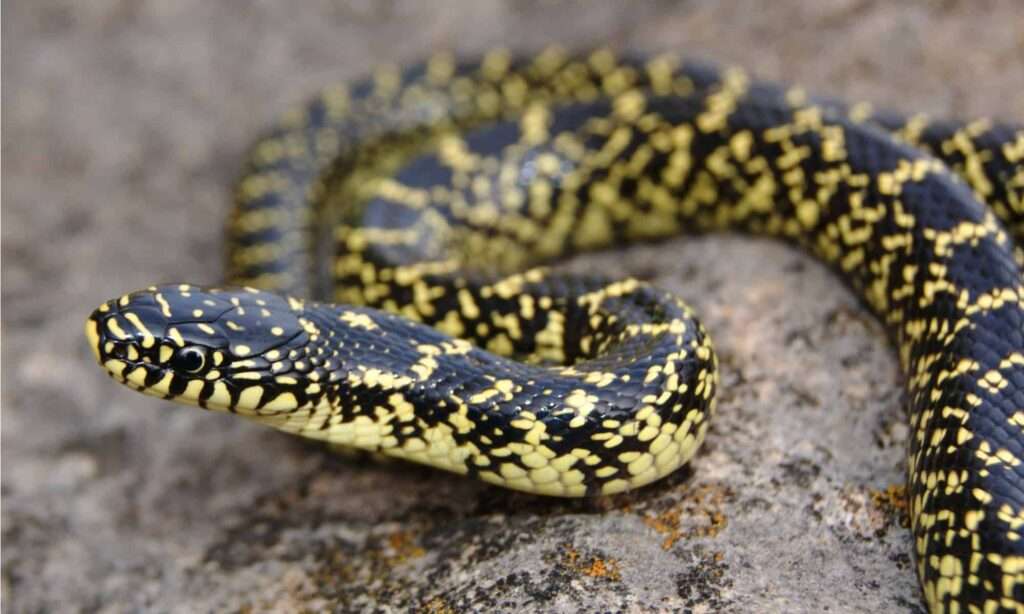
Description:
Scientific name: Lampropeltis holbrooki
Life span: 10-20 years
The speckled king snake, commonly known as the salt and pepper snake and first identified in 1842, is a subspecies of the common king snake. In Iowa, these king snakes are likewise recognized as a threatened species. Their body is long and slender, and they have a small head that is roughly the same size as the neck. They also have black or red eyes. The classic speckled king snake, though it comes in a variety of colors and morphs, has a black or dark brown body with white or light yellow specks running along the back and a creamy white or light yellow underside.
Native Region/Habitat
From southern Iowa to the Gulf of Mexico, the central and southern United States are home to speckled kingsnakes. Although they sometimes visit dry places like forests and grassy fields, they mostly live in moist settings like swamps and rivers.

Behavior:
Speckled kingsnakes are loners that live mostly on land. From early spring until late October, they are active, and throughout the chilly winter, they hibernate in cracks or underground in abandoned burrows. In the summer, spotted kingsnakes hunt during the day, but in the winter, they may hunt at night. They kill their prey by constriction and have an opportunistic diet. Most spotted kingsnakes are calm and non-lethal. To scare off predators when in danger, they will shake their tail like a rattlesnake.
Care As a pet/In captivity:
According to its entire length, your snake should generally have two thirds of the available area. So, your enclosure should be 4 feet long, 2 feet wide, and 2 feet high if your snake is 6 feet long. These snakes are naturally quite active, thus a larger vivarium with lots of decorations to climb on and explore is appreciated. It is recommended to acquire a sturdy enclosure with glass sliding doors because most snakes don’t like being handled or observed from above. Lockable doors are also a good idea because all snakes are excellent escape artists. Verify there are no openings your snake can slip through and that your enclosure is totally escape proof.
Mostly thawed out frozen mice or chicks should be given as threats to spotted kingsnakes because they are carnivores that kill their prey in the wild by constricting (wrapping their body around their food and squeezing until it stops breathing). The size of the mouse will depend on the size of your snake, but generally speaking, no food should be broader than 1.5 times the snake’s head width. Adult mice should be fed once every 7–10 days to adults, whereas pinkies should be given to hatchlings once every week.
Table





